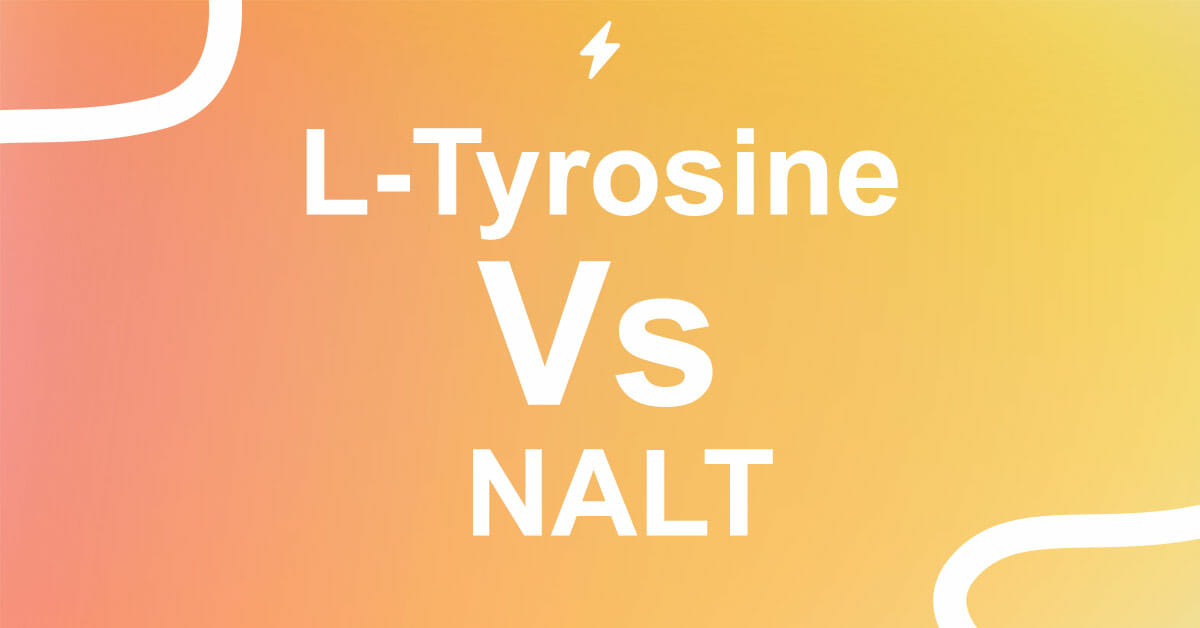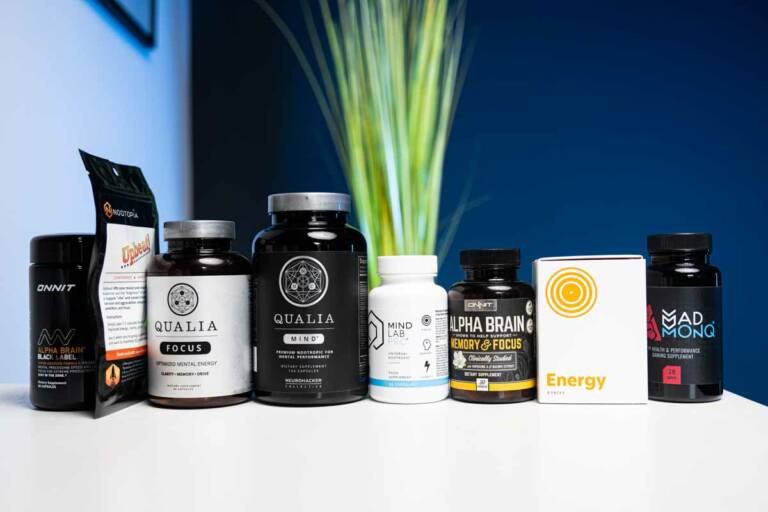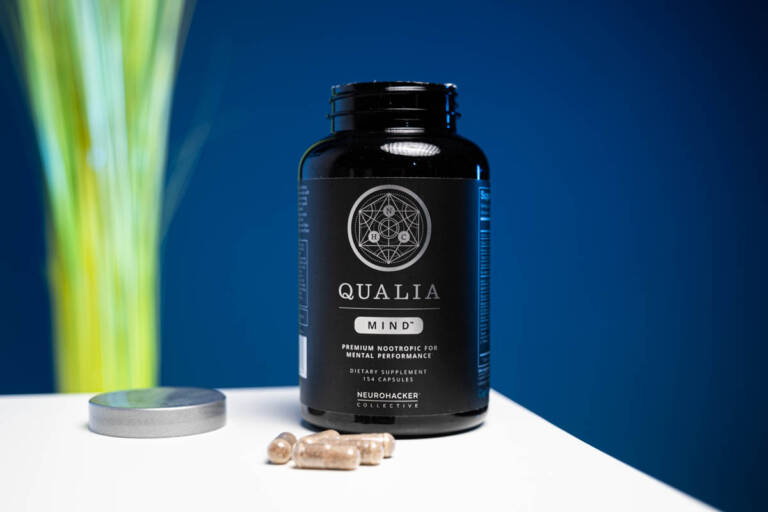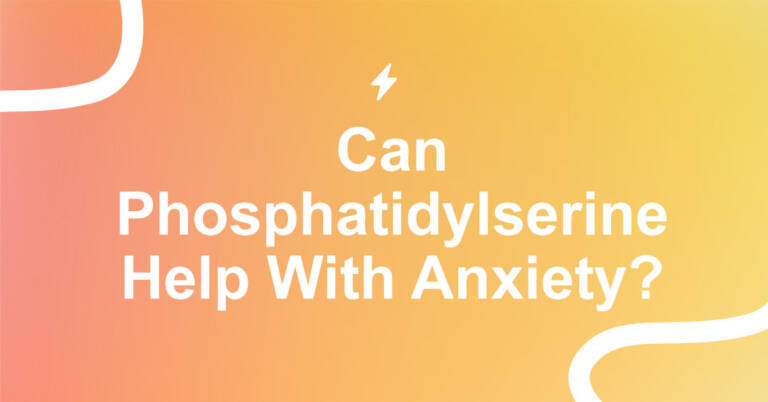Tyrosine is considered one of the most potent nootropics for countering the effects of acute stress. Neurohackers recommend it whenever you experience mental fatigue, lack focus, or want to maintain mental dexterity during sleep deprivation.
As a nootropic for cognitive enhancement, tyrosine not only modifies the brain’s neurotransmitter levels but also forestalls their depletion to optimize brain function and support overall mental health.
However, its greatest potential is observed under stressful conditions. When the brain’s chemical balance falls out of whack in stressful situations, tyrosine effectively prevents brain burnout and enhances mental performance.

What Is Tyrosine?
A naturally occurring amino acid, tyrosine is required to maintain both our physical and cognitive health. It is among the most effective nootropics that help boost motivation, working memory, and mental clarity, and prevent cognitive decline along with providing other benefits for cognitive performance. That’s why almost every high-quality nootropic stack contains some tyrosine.
A nonessential amino acid, tyrosine is a precursor to important hormones including dopamine, adrenaline, noradrenaline, and other vital compounds. These hormones also work as neurotransmitters that enhance cognitive function and promote overall brain health.
Collectively, the adrenal glands produce these catecholamine neurotransmitters and release them into the bloodstream when the body experiences any kind of stress.
That being said, tyrosine comes in a few different forms. The most widely known among these are basic tyrosine, L-tyrosine, and N-acetyl-L-tyrosine (NALT).
There is an ongoing debate among the biohacker community about which form of tyrosine is better for improving cognitive function and optimizing brain health.
What Is L-Tyrosine?
L-tyrosine is an amino acid that occurs naturally in the human body. It provides benefits that range from improving physical and mental performance while also reducing stress.
Research shows that L-tyrosine crosses the blood-brain barrier readily. Once in the brain, it becomes involved in restoring neurotransmitter levels.
L-tyrosine is created when its precursor, another amino acid called phenylalanine, gets metabolized in the liver.
What Is N-Acetyl-L-Tyrosine?
N-acetyl-L-tyrosine, N-acetyl-tyrosine, acetyl tyrosine, or NALT are all names for an acetylated form of L-tyrosine. NALT possesses an acetyl group attached to the tyrosine molecule. N-acetyl-L-tyrosine (NALT) is promoted for its better absorption and efficacy and the acetyl group in NALT must be cleaved off or removed in order for it to become active in the body and form tyrosine.
N-acetyl-tyrosine is a more soluble form than standard tyrosine which naturally implies that a lower dose of NALT could give the same benefits as a larger dose of L-tyrosine. However, in reality, NALT has a much lower conversion rate as compared to L-tyrosine in the body.
This implies, that a higher dose of N-acetyl-L-tyrosine may actually be needed to get the same effects when compared to a standard L-tyrosine dose.
However, both amino acids are precursors to important neurotransmitters and help elevate tyrosine levels in the body.
N-Acetyl-L-Tyrosine Vs L-Tyrosine Differences
L-tyrosine is the most common abundant isomer of tyrosine whereas N-acetyl-L-tyrosine is a derivative of L-tyrosine. It is promoted for its superior absorption and efficacy that can, in theory, improve tyrosine’s bioavailability.
N-Acetyl-L-Tyrosine Vs L-Tyrosine Similarities
-
Both forms of tyrosine share a similar chemical structure.
-
Both are dopaminergic nootropics important for cognitive function and mental health.
-
Both can also be used successfully in supplemental form to treat stress and other related conditions.
Which Form Of Tyrosine Is Best?
Tyrosine is among the many ingredients that come in a number of alternative forms, especially where different forms promise superior bioavailability. Other examples can include agmatine, citrulline, betaine, and most notably creatine.
Creatine, like tyrosine, is another contender that promises superior water solubility with its many different forms including creatine HCL, magnesium creatine chelate, creatine ethyl ester, and creatine nitrate.
The original form of creatine is creatine monohydrate which is also the most studied and proven effective.
However, newer forms that have sprung over the years promise better bioavailability than creatine monohydrate simply based on the fact that they are more bioavailable, exert less GI distress, and taste better.
Bioavailability And Absorption
In the case of tyrosine, freeform tyrosine does not dissolve easily in water but the addition of the acetyl group makes it incredibly soluble. This enhanced bioavailability of N-acetyl-L-tyrosine can lead people to conclude that NALT may be the better form of tyrosine.
However, tyrosine is a fairly fast-acting nootropic on its own. Even when consumed in its basic form, tyrosine supports cognitive performance, motivation, focus, and drive within one hour or so of consumption.
Most clinical trials that have investigated tyrosine use simple L-tyrosine instead of NALT. So, even though NALT might act somewhat faster and be potentially more powerful by weight, it does not seem to present too much of a difference in performance.
Research indicates that a 100 mg dosage of L-tyrosine has the potential to raise tyrosine levels for up to 7-8 hours in the body. [*]
On the other hand, only a handful of studies have looked at consuming NALT orally but a few have observed its effects during intravenous infusion.
Typically, when administered intravenously, the infusion delivers 100% bioavailability of injected compounds as it transports these straight into the bloodstream.
In the case of NALT, one research study observed that subjects who were given 5 grams of NALT using adult parenteral nutrition only demonstrated an increase in plasma tyrosine levels by 25% while another similar study did not find any brain tyrosine increases after administering NALT intravenously. [*] [*]
These figures do not present NALT to be a superior tyrosine source as it has been projected by supplement companies.
It also leads some researchers to believe that the body doesn’t readily convert NALT to tyrosine as effectively as L-tyrosine does.
Following intravenous administration, one study documented that 35% of the NALT administered got excreted in the urine unchanged. [*]
Two more studies also noted significant urinary extraction of 56% and 60% of the NALT administered as excreted in the urine unchanged.
Based on these findings it may be concluded that NALT may not necessarily be the superior option to increase plasma tyrosine concentrations as 60% of NALT does not get converted to tyrosine and is just excreted out of the body unchanged.
Other Research
On the other hand, several studies have investigated the effect of tyrosine supplementation in patients with phenylketonuria (PKU).
PKU is an amino acid disorder where sufferers lack a specific enzyme that breaks down phenylalanine. And since tyrosine can be synthesized from phenylalanine, tyrosine supplementation is usually prescribed.
These studies have all used tyrosine as opposed to NALT with findings showing increased neurotransmitter biosynthesis in PKU patients induced by phenylalanine restriction or tyrosine supplementation. [*]
In another area, tyrosine supplementation has also been studied for its effects on renal failure by using tyrosine dipeptides in both normal and uremic humans.
Study findings show that tyrosine peptides, but not NALT, may serve as a nutritional substrate in renal failure patients. [*]
Another study even investigated the usefulness of N-acetyl-tyrosine and N-acetyl-L-cysteine as tyrosine and cysteine precursors with intravenous infusion.
Findings showed plasma levels increasing rapidly with a 25% increase in tyrosine levels and a 35% reduction in total cysteine.
However, urinary extraction of acetyl-L-tyrosine was 56% as opposed to acetyl-L-cysteine at 11%. [*]
Using Tyrosine In A Nootropic Stack
It is easy to stack tyrosine with other interesting natural nootropics to magnify cognitive enhancement.
A popular option is to stack L-tyrosine with B vitamins that assist in the conversion to dopamine and other catecholamine neurotransmitters.
Another way to go is to use L-tyrosine and L-theanine together, especially if you want to improve cognitive performance during times of acute stress.
Some research even indicates that it may be safe to use tyrosine with ADHD medication such as Adderall or Ritalin since it does not seem to have any contraindications with either medicine.
Side Effects Of Tyrosine Supplements
Tyrosine supplements are generally considered safe when taken at the recommended dosage. However, some mild and temporary common side effects may include experiencing headaches, migraines, heartburn, fatigue, or mild digestive distress.
Because there isn’t too much research identifying the safety profile of long-term, high-dose tyrosine supplementation, it is recommended that using tyrosine should be limited to a maximum of three months or less.
Tyrosine should not be used by anyone taking medication for high blood pressure or thyroid issues.
Likewise, people using stimulants or monoamine oxidase inhibitors should also not use supplements with tyrosine content.
In addition, anyone afflicted with hyperthyroidism, melanoma, or Graves’ should avoid using tyrosine supplements.
Anyone suffering from Parkinson’s disease using levodopa is also prohibited from using tyrosine supplementation as it can impair the drug’s efficacy.
There is also no evidence to consider tyrosine safe for pregnant or nursing women.
Verdict
To conclude, the more well-studied and effective form of tyrosine for your supplement needs appears to be L-tyrosine. It appears to have sufficient scientific validation for supporting different aspects of cognitive function including focus, working memory, and mental clarity, among others.
Not only is L-tyrosine more effectively converted to tyrosine, but it also does a better job to elevate plasma tyrosine levels than NALT. Proponents of NALT however, will support that it has better absorption and presents stronger nootropic effects than L-tyrosine.






